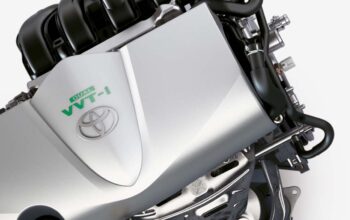Uzone.id – Car Air Conditioning (AC) is the solution when the weather in the capital city is very hot. Indonesia is a tropical country with quite hot air temperatures, especially when the dry season arrives. At times like this, many people feel hot and need cooling.
Cooling is not only needed at home but also when driving, especially if the journey takes a long time because it is so far away.
Enjoying a trip safely and comfortably is a must. Inevitably many people choose to use air-conditioned cars. Without AC, conditions in the car become hotter and of course, make the passengers inside uncomfortable.
Everyone knows what an AC looks like and what its function is, but when asked what AC stands for and how it works completely, everyone will be confused. So that you understand, here are some brief explanations about what car AC is, and how it works.
What is car air conditioning?
Before going any further, friends must know what AC is. AC or the abbreviation for Air Conditioner is a device that can reduce hot air to cold air using freon. This AC is not only needed in a room but also when driving a car. Therefore, to make driving comfortable, cars are now equipped with air conditioning whose temperature can be controlled. That is the definition of AC in general.
Meanwhile, AC specifically is a tool used to regulate the circulation of refrigerant gas. This refrigerant is a substance that is used because of its ability to change shape quickly.
Not only that, the refrigerant is also able to adapt when sudden or drastic changes in temperature occur. The AC structure, whether indoor AC or car AC, is the same, only car AC has a more dynamic structure.
There are at least two types of car AC in general, namely single blower and double blower. Single blower AC is a car AC that is placed on the front of the car or the dashboard. Meanwhile, apart from being placed on the dashboard, the double-blower car AC is also placed in the middle of the car.

Benefits of car air conditioning
There are many benefits of car AC, not just focusing on how to create a cool atmosphere while in the car. The following is a complete explanation.
1. Control humidity
The cold air that comes out of the AC when it is turned on is the result of dew expansion. It’s not surprising that the air humidity in the car is better maintained. Even so, friends should be alert if the air humidity in the car increases drastically. The reason could be the capillary pipe or an AC component that may be dirty or leaking which makes all parts of the car cold.
2. Purify the air
The next benefit of car AC is its ability to purify the air. With the air in the car being pure, dust and dirt will not be a nuisance, which could put the driver’s health at risk.
3. Control air circulation
Why do all the car windows have to be locked tightly when the AC is turned on, even though passengers also need air to breathe? There’s no need to worry because the air circulation in an air-conditioned car can still run, it just circulates through the car’s AC. So that passengers inside can still breathe oxygen smoothly without fear of difficulty breathing.
Main components of car AC
Before discussing how a car AC works, you must know very well about the main components of a car AC. Following are the 5 main components of car AC.
1. Compressor
The compressor is an AC component that has a vital function, namely circulating freon throughout the AC system. This is done by increasing the pressure in the freon. There are at least two channels that the compressor has, namely the suction channel and the exhaust channel. The suction channel is the low-pressure side connected to the evaporator while the exhaust channel is the high-pressure side connected to the condenser.
2. Condenser
The next AC component is the condenser. This condenser’s function is to absorb heat from the freon that has previously been compressed. This condenser also has the task of changing freon into gas or liquid form.
3. Expansion Valve
The expansion valve is a component that functions to convert liquid freon into gas or steam. The purpose of this change is none other than so that the high-pressure liquid can be sprayed into the evaporator. Not only that, the expansion valve is also responsible for preventing overflow and freezing.
4. Filter Dryer
As the name suggests, the filter dryer functions in terms of filtration or filtering. Apart from filtering, this dryer filter also functions as a container and as a steam dryer in the car air conditioner.
5. Evaporator
This evaporator has the function of storing freon which has changed into steam or gas. Then it passes through another component, namely the expansion valve. Basically, in this evaporator, the freon evaporates and takes the heat in the evaporator pipe. As a result of this process, the pipe becomes cold and is then blown into the cabin. This is what makes cold air emerge from the AC.
How car AC works
To discuss how car AC works, in principle, it is a combination of these five main components. The following is a complete review that you can easily understand.
- When the AC is turned on, freon will be pumped by a compressor. The power of the compressor to pump is what determines the speed of the AC to cool the car cabin. Freon in gas form is pumped at high pressure so that the temperature reaches 100 degrees Celsius.
- After reaching this temperature, the freon changes to liquid form which is then flowed to the condenser. In the condenser, the freon is cooled to a temperature of 60 degrees Celsius. The component that plays a cooling role is the cooling fan.
- Once the temperature is not too hot, the liquid freon is then filtered using a filter dryer. This filtering process makes the AC air cooler and fresher.
- After going through the filtering process, the liquid freon flows into the expansion valve. This component is responsible for changing liquid freon into gas or vapor form. At the same time, the pressure of the freon is also reduced by the expansion valve.
- The Freon which has changed into steam is then flowed to the evaporator. Only after that is the freon vapor channeled into the cabin with the help of a blower. This blower works the same way as a fan, namely its job is to circulate air throughout the room.
- When the steam is sprayed, the compressor again sucks up the freon pressure. This freon pressure is then pumped back until it becomes high-pressure or hot. And after that repeat the process from start to finish as long as the car’s AC is on.
That’s a complete and brief explanation of what car AC is, and how does it work? Up to an explanation of the main components of a car AC which are similar to AC Home is just more flexible considering the size of the car is not comparable to the room. Hope it is useful.
















